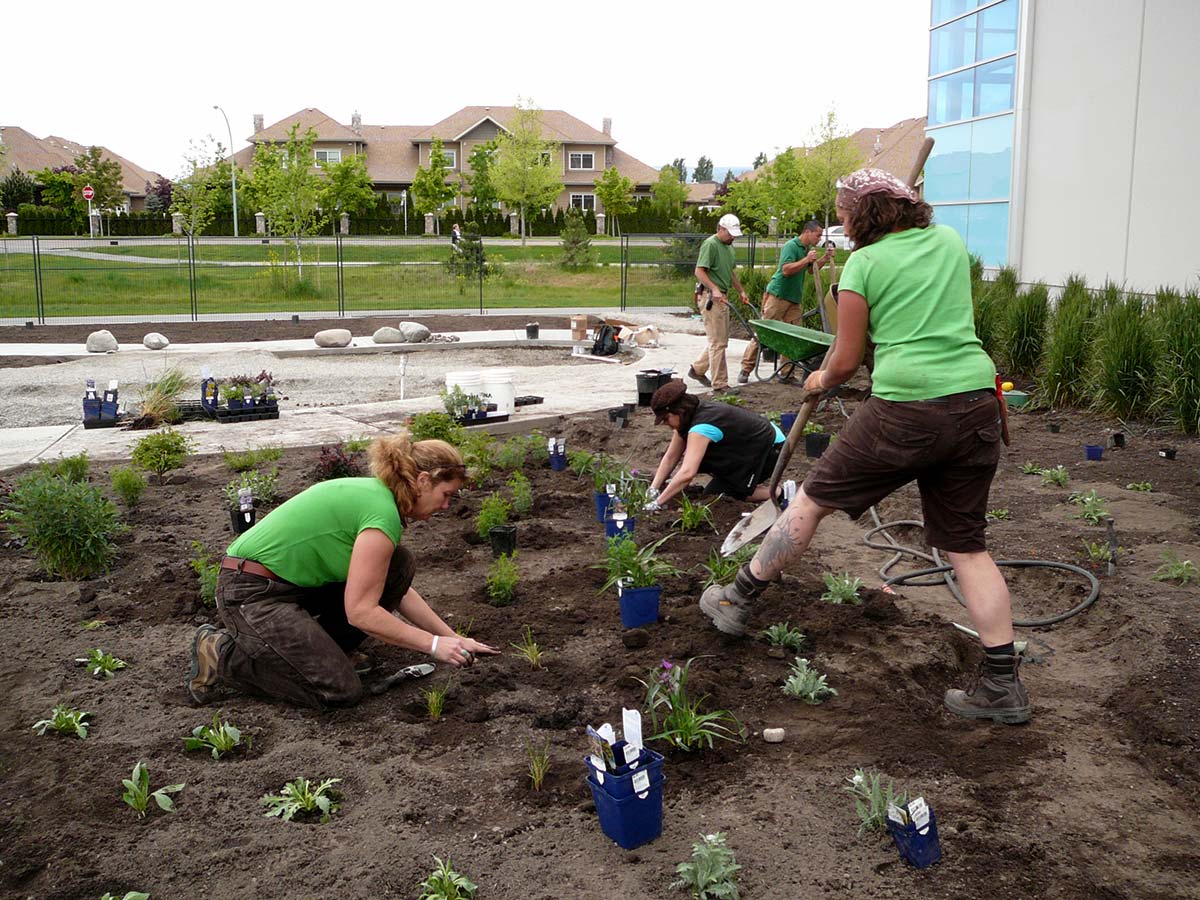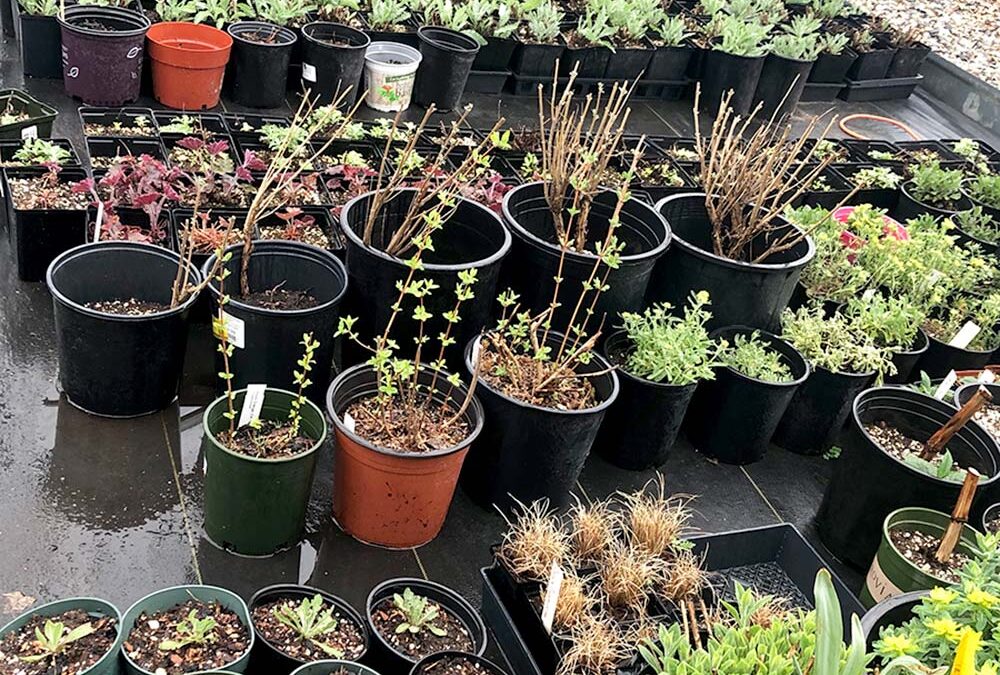Article by Gwen Steele–
The following is information I put together years ago for my nursery customers and now use for my classes. With the hot, dry springs we have these days, it’s more important than ever to follow good planting procedures to ensure success.
If you can’t plant right away, keep plants in the shade and water frequently (check daily).
If a plant dries out, submerge the pot in a bucket of water until bubbles stop coming out or it sinks to the bottom. If plant does not recover in a few hours, trim back some foliage.
Be sure to space plants for expected mature size to avoid crowding and extra maintenance chores in future.
Submerge each pot in a bucket of water (see above). If part of the root ball is dry when you plant, roots may stay dry no matter how much you water the surrounding ground. The plant could die from lack of water.
Dig a hole about twice the width of the pot and one and a half times its depth. You may add bone meal to encourage root growth. Fill hole with water. Wait until water drains away.
Pull the plant gently out of its pot. If it resists, tap the side of the pot or squeeze to release plant. If necessary, cut the pot.
If there are a lot of roots on the outside of the root ball, gently loosen roots, especially at the bottom. If you don’t do this the roots will not spread into the surrounding soil. The plant will fail to thrive and could die.
If roots are very dense, make a few shallow vertical cuts through the side of the root ball and across the bottom to encourage growth out into the soil.
Place the plant in the hole. Fill in the hole, with the original soil. Press the soil down firmly with your hand around the plant stem. The plant should be in a slight depression. This allows water to soak down into the roots rather than running off.
Thoroughly soak the plant again. If the weather is warm, or you are on a slope, consider building a ‘dyke’ of soil in a circle around the edge of the hole. This will ensure that water will soak into the root area of the plant when you are watering or it rains.
Spread mulch over the soil to retain moisture and suppress weeds.
If bedding plants or perennials are leggy (tall and spindly) when planted, it’s a good practice to cut them back a bit so the roots have a good chance to get established without struggling to maintain a lot of foliage. This results in a much bushier, healthier plant.



